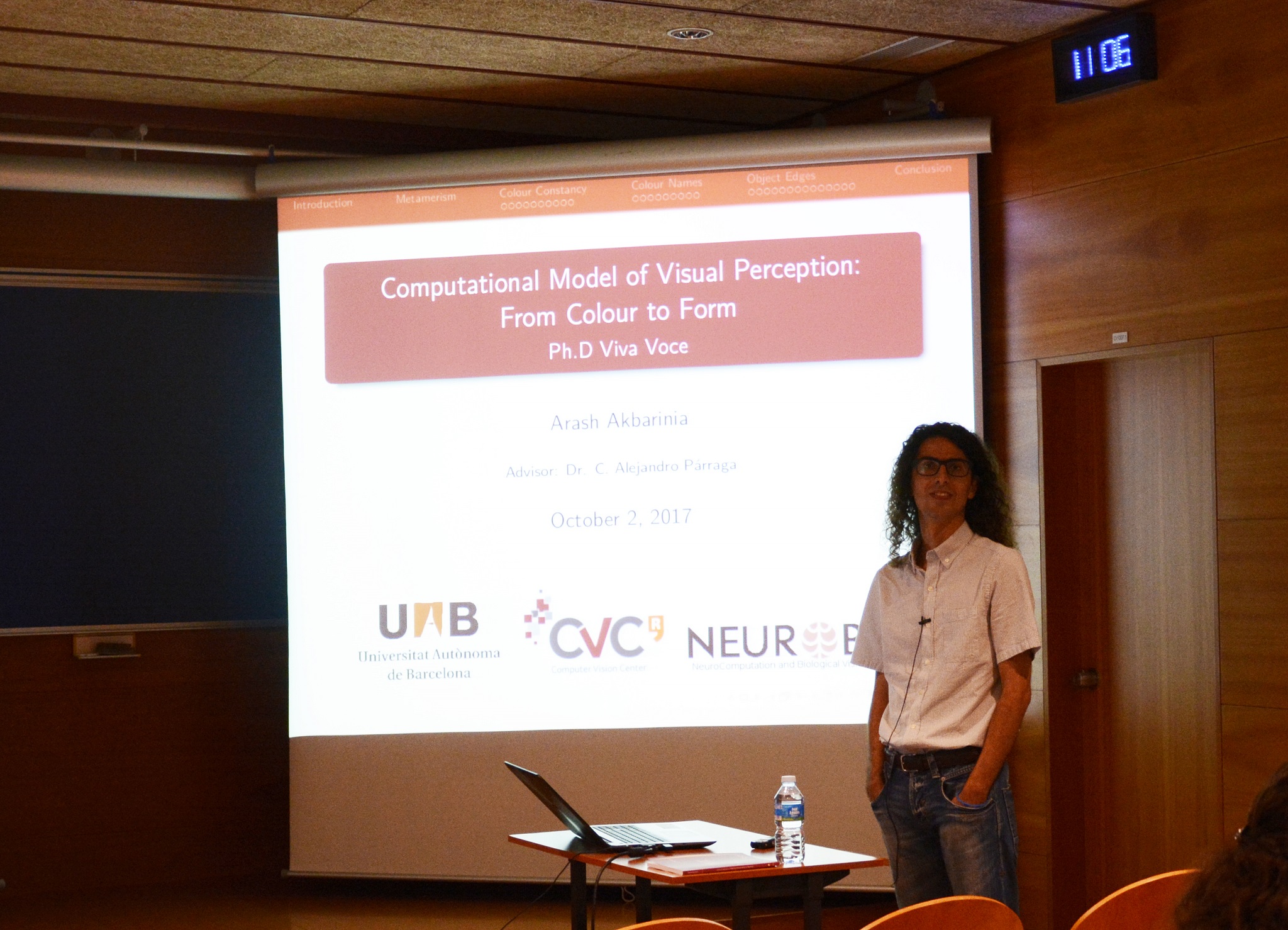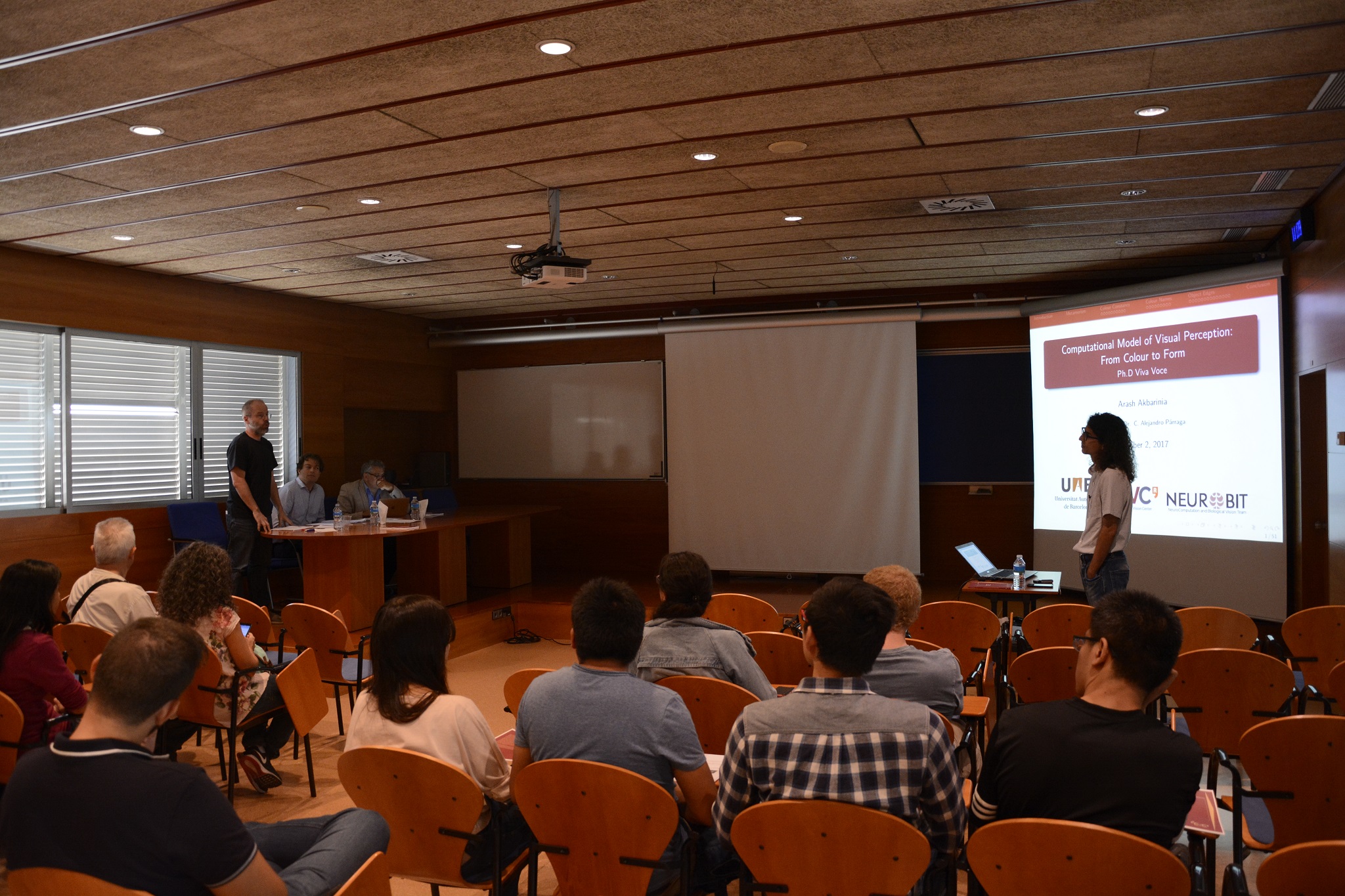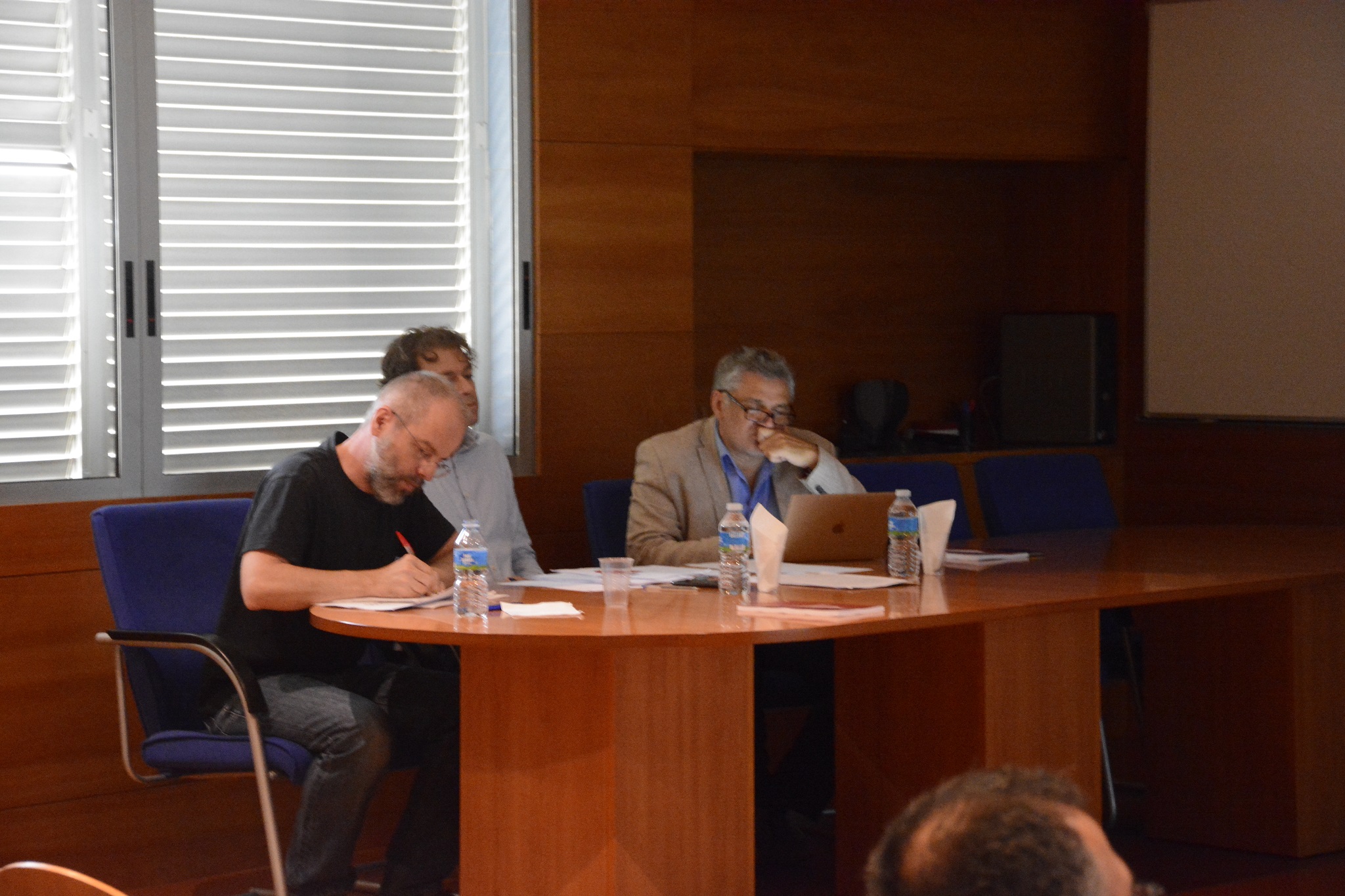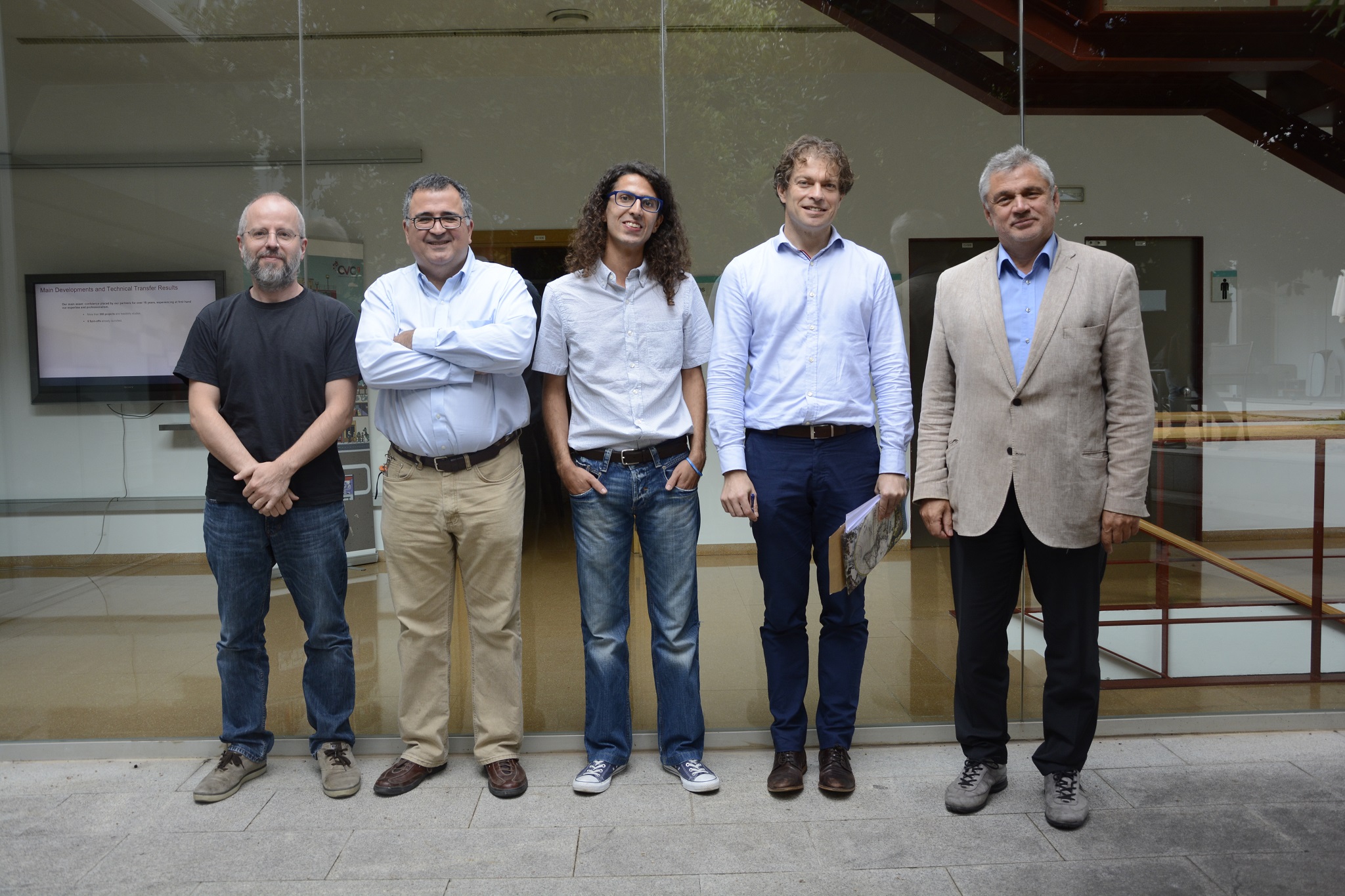
CVC has a new PhD on its record!
Abstract:
The original idea of this projectwas to study the role of colour in the challenging task of object recognition. We started by extending previous research on colour naming showing that it is feasible to capture colour terms through parsimonious ellipsoids. Although, the results of our model exceeded state-of-the-art in two benchmark datasets, we realised that the two phenomena of metameric lights and colour constancy must be addressed prior to any further colour processing. Our investigation ofmetameric pairs reached the conclusion that they are infrequent in real world scenarios. Contrary to that, the illumination of a scene often changes dramatically. We addressed this issue by proposing a colour constancy model inspired by the dynamical centre-surround adaptation of neurons in the visual cortex. This was implemented through two overlapping asymmetric Gaussians whose variances and heights are adjusted according to the local contrast of pixels. We complemented this model with a generic contrast-variant pooling mechanismthat inversely connect the percentage of pooled signal to the local contrast of a region. The results of our experiments on four benchmark datasets were indeed promising: the proposed model, although simple, outperformed even learning-based approaches in many cases. Encouraged by the success of our contrast-variant surround modulation, we extended this approach to detect boundaries of objects. We proposed an edge detection model based on the first derivative of the Gaussian kernel. We incorporated four types of surround: full, far, iso- and orthogonal-orientation. Furthermore, we accounted for the pooling mechanism at higher cortical areas and the shape feedback sent to lower areas. Our results in three benchmark datasets showed significant improvement over non-learning algorithms. To summarise, we demonstrated that biologically-inspired models offer promising solutions to computer vision problems, such as, colour naming, colour constancy and edge detection. We believe that the greatest contribution of this Ph.D dissertation is modelling the concept of dynamic surround modulation that shows the significance of contrast-variant surround integration. The models proposed here are grounded on only a portion of what we know about the human visual system. Therefore, it is only natural to complement them accordingly in future works.

















